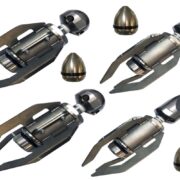It is hard to imagine a modern household without a state-of-the-art microwave in the kitchen. From a busy day at work to get-togethers at home, a microwave comes in handy in day-to-day chores. Nonetheless, many are unfamiliar with the classifications in ovens and microwaves – while OTG is primarily used for toasting, grilling, etc., convection and microwave ovens have more diverse purposes of serving.
Several vital similarities and differences between the two make the consumers feel puzzled, especially while buying. And often they end up making the wrong choice! But relax – these 5 differences below would help you make your mind with much ease!
Cooking Mechanism
The key difference between a convection-type oven and a built-in microwave oven is the way they work. A convection oven is fabricated with a fan that allows circulating the hot air constantly. The air will transfer the heat to the food, helping it cook well and evenly.
The cooking method in the built-in microwaves follows a different mechanism as it generates an electromagnetic wavelength that triggers the water molecules in the food to vibrate. This vibration that leads to friction produces heat, warming up the food from inside.
Cooking Speed
Both these types offer faster cooking time to make your life easier. Microwaves are conventionally known for their fast heating capabilities. They can heat up your food in seconds without any burning. You can use it for defrosting your frozen pizzas or chicken rolls.
Convection ovens have no hot or cold spots and they can cook evenly. If you want to cook something that needs slower heating, this oven can be very handy for that purpose, too. In fact, you can even cook more than one dish at a time in a convection type oven. They are manufactured to attain higher temperatures for faster cooking!
Cooking Objectives
Cooking appliances are crafted to meet the requirements of varied cooking objectives. Put simply, another prime distinction between convection and built-in microwave ovens is what you are cooking.
For recurrent baking, roasting, browning purposes, you may invest in the convection ovens.
If your requirements are minimal, like defrosting, boiling, and reheating food, then avoid over-thinking and buy a built-in microwave.
However, a convection microwave oven will gain you the best of both worlds – you would be able to warm food up with temperature controls and attain high temperatures for grilling, etc.
Varied Capacities
Quite evidently, convection ovens are featured with higher capacities, exceeding 40 litres to the most.
On the contrary, the in-built microwave ovens can be found in the ranges of 20-30 litre capacities, depending on the price points.
Cooking Efficiency
The convection ovens have been scored up a little in terms of efficiency. The pervasive hot air heats food, starting outward and then moving inward, achieving a uniformed heating process without leaving a cold spot.
Unlike this conventional technique, the waves of radiation that bristles through your food warm it up from inside. Ignition of collision in every food molecule depends on how these waves rise, fall, and interact with each other. Hence, if one small portion of your food is left cold and another burning hot, it is because of the hot and cold spots.
Microwaves make our everyday life easier indeed. A fair knowledge of its categories will assist you with the recipes inside the kitchen and stores for a smarter purchase!













Comments